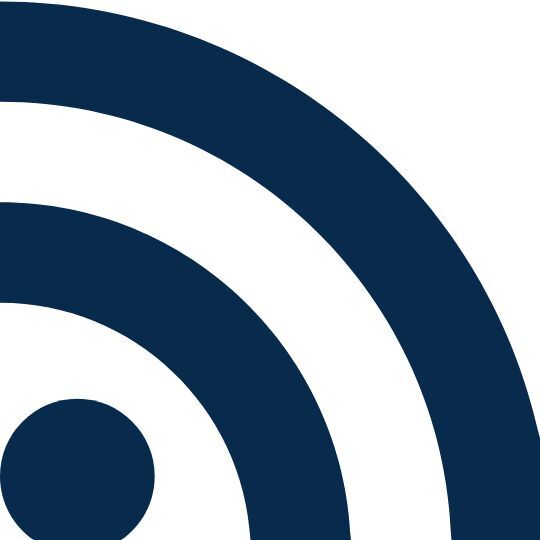Insights
Investing in Small Cap Companies
Tamer Alamuddin, a Senior Portfolio Manager at Choate Investment Advisors, and Jim Robillard, Founder and Chief Investment Officer of Spyglass Capital Management, discuss the criteria for investing in small capitalization companies, Spyglass’ seven-point investment philosophy, and the need for an agile portfolio to navigate the current COVID-19 crisis.
Transcript:
Tamer Alamuddin: Hi everyone, this is Tamer Alamuddin of Choate Investment Advisors. I am joined today by Jim Robillard. Jim Robillard is the Founder and Chief Investment Officer of Spyglass Capital Management. A long-only concentrated growth manager based in San Francisco, California. Jim founded Spyglass in 2015 after spending more than 11 years at Edgewood Management. First as a senior research analyst and then as a managing director and member of the portfolio management team. Although Spyglass has just been around for five years, it is already a successful investment firm with more than more $1B of assets under management.
Good afternoon, Jim. How are you?
Jim Robillard: Hi Tamer. How are you? I’m doing well, thanks for having me.
Tamer Alamuddin: Jim, I wanted to start just with a simple question of why small companies? You’ve spent the bulk of your career prior to this at Edgewood which is focused on large cap firms and then you decided to transition to looking at investing in small cap companies.
Jim Robillard: Sure, that is a great question. I think it really comes from, if you look at the whole scope of my career, dating back to the mid 90’s. I did begin my career in small caps with Ron Barren in New York, and I have always been fascinated by smaller companies. I think part of that is the obvious nature of the fact that we know that there are more targets than there are people doing the research in small cap. The research is not as well-financed and there are more inefficiencies in the marketplace. While I was at Edgewood, which is a fabulously successful firm that I am incredibly proud to have been a part of, one of the things that we found was that we were, the longer we owned business the better we would oftentimes do understanding the business, being able to react to information that was becoming available to us, and then also incorporate that information into our own positions in terms of whether or not the stock was undervalued or not. The more information we had, the longer we had this duration matter and so, I found myself at Edgewood trying to find smaller and smaller companies overtime, dispute the fact that we are a large cap. I like the idea of finding very small large caps that would ultimately become leaders in their space. As we grew, that became a little bit more challenging mathematically. I went to my partners at the time, I said listen, we are deploying capital at one level but as I look down cap, there are lots of business that I am seeing in these conferences and running into through course of due diligence on our names that I think we could own. I think they are very interesting and could identify if they would likely be leaders over time, we should start this research process earlier. That lead to series of conversations around whether or not Edgewood could ever develop a product down cap from its large cap product and because they wanted to be a single strategy firm there was really no way to do that at Edgewood. So, while the conversations was going on, I investigated my own interest in exploring small and medium-size companies as a separate business model. And while Edgewood couldn’t do it internally, they did back me to start Spyglass as a separate entity. We were able to use many of the same fundamental tools to discover these names just at much smaller sizes where are we think there are systemic opportunities that are unique to small/medium size companies because of basically the way that Wall Street coverage engine works. More resources are dedicated to bigger businesses that do more banking deals so there is less coverage down there and more inefficiencies for us to exploit.
Tamer Alamuddin: Well this is a great segue to my next question which is what do you look for in a typical investment? What types of characteristics do you typically find in companies that approve to be good investments?
Jim Robillard: Yes, I think we talk a lot about this with investors that we have these seven core criteria. The first two really set up everything else. The first two are: Is the company a leader in its space? That comes through 100s of hours of due diligence on an industry and on the individual businesses in determining whether or not the company is either the leader or likely to become the leader over time in the sector of the market that they operate in. The next and equally important component is – what is our assessment of management? Because we tend to be very long term investors measured in three to five or more years at a time. What we really are underwriting the quality of the management team at the end of the day. A financial model is hugely impacted by the decisions of senior management and we think that other investors sometimes misunderstand how significantly the results can be affected by good and/or bad decisions so we would want to have a lot of confidence in those people. If we have a business that we think is likely to be a leader because of its products and services, and we think we have an ultimately extremely confident management team that can navigate through all the pitfalls that are ahead of the business the next year's strategy and lead the business to its full potential over time, that gives us confidence that we have the next three components which are sustainable competitive advantages and then those lead to above-average revenue growth, above-average earnings growth. The sixth component is interesting which is a requirement. We need to have a level of financial disciple of the company where the business can withstand significant shocks and still operate. I think one of the clearest examples of that is through the course of COVID-19 because of this component that we have not had to liquidate a single holding because of a liquidity or balance sheet issue that we looked at our portfolio companies. Now we did not anticipate the severity of COVID-19 prospectively, I want to be clear about that, I am not saying we did, I am saying that one of the clear benefits of having this constraint on making an investment of being financially capable allowed us to weather the storm better than many of our peers. Those are the first six components that get a stock into our universe and then valuation is the seventh component of the criteria that allow us to put stock in the portfolio.
Tamer Alamuddin: So, Jim, you brought up the current crisis. How have you adapted your investment approach to navigate through this period, and where do you see opportunities?
Jim Robillard: So, it is very interesting. The crisis itself in immense global strategy, horrible things happening, ironically I don’t mean this to sound callous, but it has been good for certain businesses. The reason it is good is that it has further cemented ways that they had in their industry groups or has helped raise the awareness of the solution to its un-market. So, if you think about businesses that armed like Everbridge was just critical event management for alerting. You look at DocuSign which allows you to transact complex contracts across the Internet. You look at Equinix which helps route internet traffic officially a reliable around the globe, to name a few. These names – there having business with the district beneficiaries. If you look at something that has been happening for really more than a decade which is the move to Cloud, the COVID crisis has really accelerated that trend. If you weren’t a cloud-centric enterprise municipality organization, pick your noun, you are going to be now. There is no choice but to be. If you can’t operate in a completely decentralized fashion then you are not able to capitalize across what is, in all probability, likely happen again. You need to begin to plan for the next issue and now the pandemic, what had been in the past, we never had global coordination and social media to make it as salient as this one has been. I think that this is going to require businesses to be much more agile in the face of those developments going forward. I think other things that made businesses resilient are your balance sheet strength and being leaders in their space because if you imagine the business will survive the acute phase of the crisis, there are likely to be well suited to benefit on the back end. That is kind of an interesting point is that periods of stress in the market – in the economy – well they put pressure on everybody, it is much harder on the businesses that are the least well suited to survive the adversity. So, it is a little bit of clearing from a competitors perspective of where – if you are a business that had three or four smaller competitors that were not well funded, maybe were leveled from trying to keep up with you, we're investing very aggressively or were not financially sound. Those businesses are going to disappear, because they were not well stewarded and as a result the open space for a Spyglass type business the opportunity has actually broadened and become significantly more substantial.
Tamer Alamuddin: Right, so it is applying these characteristics – the seven characteristics that you highlighted and it is not quite as simple as buying technology companies. We’ve seen that the technology sector as a whole has held up better. Would you see the differences within technology and where best to apply sort of the principals that you adhere too?
Jim Robillard: I think I want to make sure I understand the question. I think we believe that technology as an area of investment is becoming much more pervasive across the economy. As while our portfolio is technology-heavy, it is not quite as simple as being long all tack because there are winners and losers around that space. In an environment like this is kind of accusable where you have to have very specific characteristics in order to emerge stronger than you were going in. There will be lots of companies that will end up in the dust bin of history regardless of sector, even in technology. We do think that technology is enabling a significant amount level of opportunity for businesses in that sector and others and that is why it is so interesting from our perspective is we are relatively nuanced description of what we think the technology sector looks like because we do think the software is becoming ever more present across the economy and more and more businesses that were traditionally considered in other sectors are looking more and more like technology companies, even though they are providing a non-technology product or service to their end customer. They are probably deeply utilizing advanced technology to do that. If you haven’t been a leader in investing the new way of doing business, which is now painfully evident to many, to be cloud-centric, to be focused on a highly variable cost structure and being very reactionary and agile, you are not nearly in a position that you could be.
Tamer Alamuddin: Many think that the market is trading ahead of underlying fundamentals. You mention valuation as one of your seven key criteria. Do you worry about portfolio company valuations at this point?
Jim Robillard: Actually, there are two questions in there. Broad market we really don’t really tend to have an opinion. I don’t think very much about the broad market because we don’t think of ourselves as relative investors. We are trying to generate absolute returns over long periods of time. The only way to do that is to pay rational prices for superior assets where we think rational investors in the future will pay the prices that we predict – three, four, five years from today.
What is interesting from our perspective is, because we think the COVID crisis, is likely and hopefully to be transitory, which means that in the next six to 18 months it will be in the rearview mirror, and I am not saying that to be a diffuse, I just don’t think we have a very clear lens as to when to expect it necessarily will end. I think it is important to expect it to end at some point. As five-year investors where all of our valuation work driven by expectations in 2025, looking back at today. For the vast majority of our business, the 2025 numbers are not severely inhibited by what has happened in all likelihood if our research is right, that’s why we own the businesses. In some way, they have been enhanced in the case of nearly a third of the portfolio where numbers are actually higher not low. So, net-net, present values have actually probably have gone up, net-net a little bit across the portfolio despite clearly a very difficult operating environment for the next six to 12 months as we work through quarters where there are huge unemployment and shelter in place and so forth, we expect fundamental numbers to very, very bad over the next few quarters. But, equities as our instrument are supposed to do something very simple. They are supposed to take all future cash flows and discount them back today, not just the next six quarters. Because we are always looking out beyond that timeframe, and evaluating the business, hopefully like a rational investor, we are quite optimistic we are at a point now we are five months into the year, and we are in a position we are thankful we are up on the year a little bit, but we were optimistic coming into the year in the five-year timeframe. Five months in, that is a significant amount of distance. If we are looking at 60 months at a time, we are nearly 10% closer to that original five-year endpoint that we were first looking at last December. Here we are not making much material progress toward those valuations. Not only that, as active managers, we were able to upgrade the portfolio pretty significantly like we have done this year where there were opportunities to present themselves. I don’t have a comment on the broad market, I do think where we see pockets where certain stocks are clearly very expensive. Those are the ones that we don’t own, but I am very comfortable with the idea in the context of our five-year timeframe that the portfolio we own today is trading at a substantial discount present value.
Tamer Alamuddin: Given that context at looking out five years and trying to see through the current crisis, what keeps you up at night?
Jim Robillard: Oh boy, I mean listen this has been just watching the news hasn’t been very much fun. I do worry about the fact – is our duration expectation that this will be over by the end of 2021 in a most conservatories view of things is that accurate, we talked to a lot to people, read lots of information and we know reputable people and think that there is a risk if this goes on longer than that, that’s the thing we have to be mindful of when we are monitoring constantly and we will adapt as we find evidence that suggests that we are too conservative or too optimistic. I think we are uncommonly balanced in the market in terms of thinking about these things from having some names that are benefiting from the crisis, some that are only modestly impacted and some that are severely impacted. The longer it goes on, we do have a significant portion of a portfolio that will do well. I worry more about the long term economic damage to what it could mean for the society at large. From a portfolio perspective, that is a second order in consideration on that front. The flip side is ironically one of the things we spend a lot of time thinking about things is do we own the right portfolio for the maximum number of scenarios going forward because we don’t know the severity or duration of the crisis exactly how the summer will unfold, what next fall will look like or next winter. Do we have the appropriate level of balance across the portfolio, and that is probably the thing I spend the most time thinking about. Then just making sure that have a really robust pipeline of potential replacements for the portfolio in the event individual security to become significantly dislocated in value for us to be able to pick up and enhance the portfolio returns.
Tamer Alamuddin: Jim, thank you so much for joining us this afternoon on our podcast. We really appreciate it.
The information provided in this recording is for informational purposes only. While Choate Investment Advisors makes every attempt to present accurate information, the information on this recording may not be appropriate for your specific circumstances and it may become outdated over time. The views expressed on this podcast are personal opinions only and should not be construed as financial advice for your given situation. Moreover, the views expressed by Jim Robillard of Spyglass are not necessarily endorsed by Choate Investment Advisors; and Choate Investment Advisors may decide to select investments on a different basis at any time and without prior notice. Past performance is not a guarantee of future performance.




